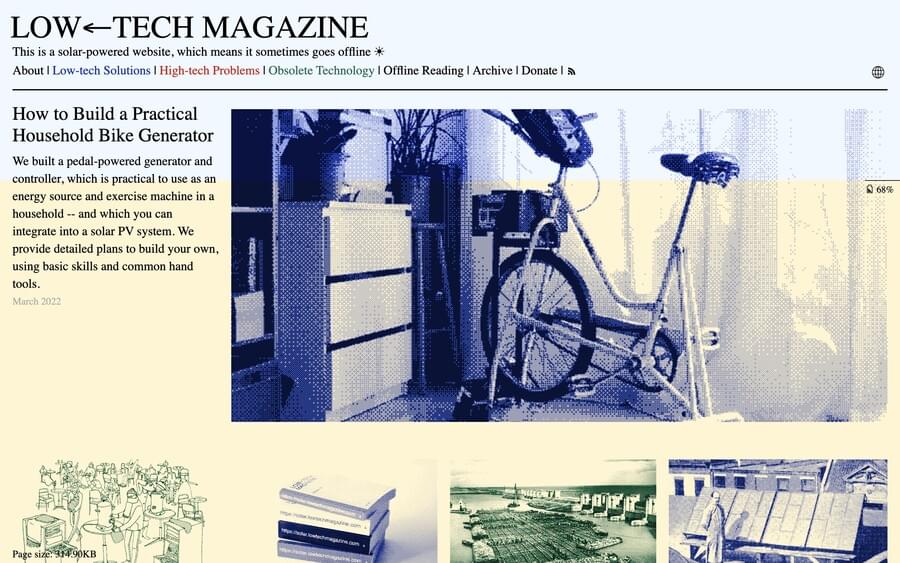
🔖 Design inspiration! Where do you find interesting websites? Below is the list of websites that I frequently visit to explore some unusual designs for inspiration:
– Minimal design (httpster.net/2022/nov/) curated by Dominic Whittle and Tom Fitzgerald at Guvnor,
– Minimal design (httpster.net/2022/nov/) curated by Dominic Whittle and Tom Fitzgerald at Guvnor,

– Low Carbon Websites (lowwwcarbon.com) curated by @Nickylewlew,
– One Page Love (onepagelove.com), with landing pages, templates and resources, curated by @robhope,
– Interaction patterns DesignVault (designvault.io), curated by @daleanthony
– One Page Love (onepagelove.com), with landing pages, templates and resources, curated by @robhope,
– Interaction patterns DesignVault (designvault.io), curated by @daleanthony
– Design made in Germany (designmadeingermany.de/galerie/websei…) by Andrea Bertsche,
– Japanese Design (responsive-jp.com) curated by Katoshun,
– Cyrillic design (cyrillic.design),
– Dark Mode Design (darkmodedesign.com)
– Japanese Design (responsive-jp.com) curated by Katoshun,
– Cyrillic design (cyrillic.design),
– Dark Mode Design (darkmodedesign.com)
– eCommerce UX by @Baymard (baymard.com/ecommerce-desi…), an incredible resource, requires a subscription,
– eCommerce inspiration (ecomm.design),
– Interaction patterns Hoverstat.es (hoverstat.es), curated by @moreguppy and @Daniel_Pow
– eCommerce inspiration (ecomm.design),
– Interaction patterns Hoverstat.es (hoverstat.es), curated by @moreguppy and @Daniel_Pow
– Whimsical design (whimsical.club) by @mxbck,
– UX in the wild (waveguide.io) documents UX examples in different platforms and contexts, by Juan J· Ramirez, Cai Cardenas,
– UX in the wild (waveguide.io) documents UX examples in different platforms and contexts, by Juan J· Ramirez, Cai Cardenas,
– Mobile inspiration UI Garage (uigarage.net) by Philippe Hong and Mobbin (mobbin.com/browse/ios/apps), (unfortunately not maintained any more),
– Site Inspire Showcase (siteinspire.com) curated by @howells
– Site Inspire Showcase (siteinspire.com) curated by @howells
– User Flows (pageflows.com), from onboarding to deleting, curated by @ramykhuffash,
– SaaS interfaces (saasinterface.com),
– SaaS Landing Pages (saaslandingpage.com),
– Landing Pages Book (land-book.com)
– SaaS interfaces (saasinterface.com),
– SaaS Landing Pages (saaslandingpage.com),
– Landing Pages Book (land-book.com)
– Landing Page Examples (landings.dev),
– Weekly UI Showcase updates: UI Jar (uijar.com), Tympanus (tympanus.net/codrops/catego…),
– Personal Sites (personalsit.es), by ✷ Henry Desroches and @piccalilli_,
– Weekly UI Showcase updates: UI Jar (uijar.com), Tympanus (tympanus.net/codrops/catego…),
– Personal Sites (personalsit.es), by ✷ Henry Desroches and @piccalilli_,
– User Journeys Inspiration (uisources.com), requires a subscription,
– General inspiration Awwwards (awwwards.com), Muz.li (muz.li).
Something is missing? Leave a comment below! 🎉🥳 #ux #ui #design #inspiration #ecommerce
– General inspiration Awwwards (awwwards.com), Muz.li (muz.li).
Something is missing? Leave a comment below! 🎉🥳 #ux #ui #design #inspiration #ecommerce
• • •
Missing some Tweet in this thread? You can try to
force a refresh





